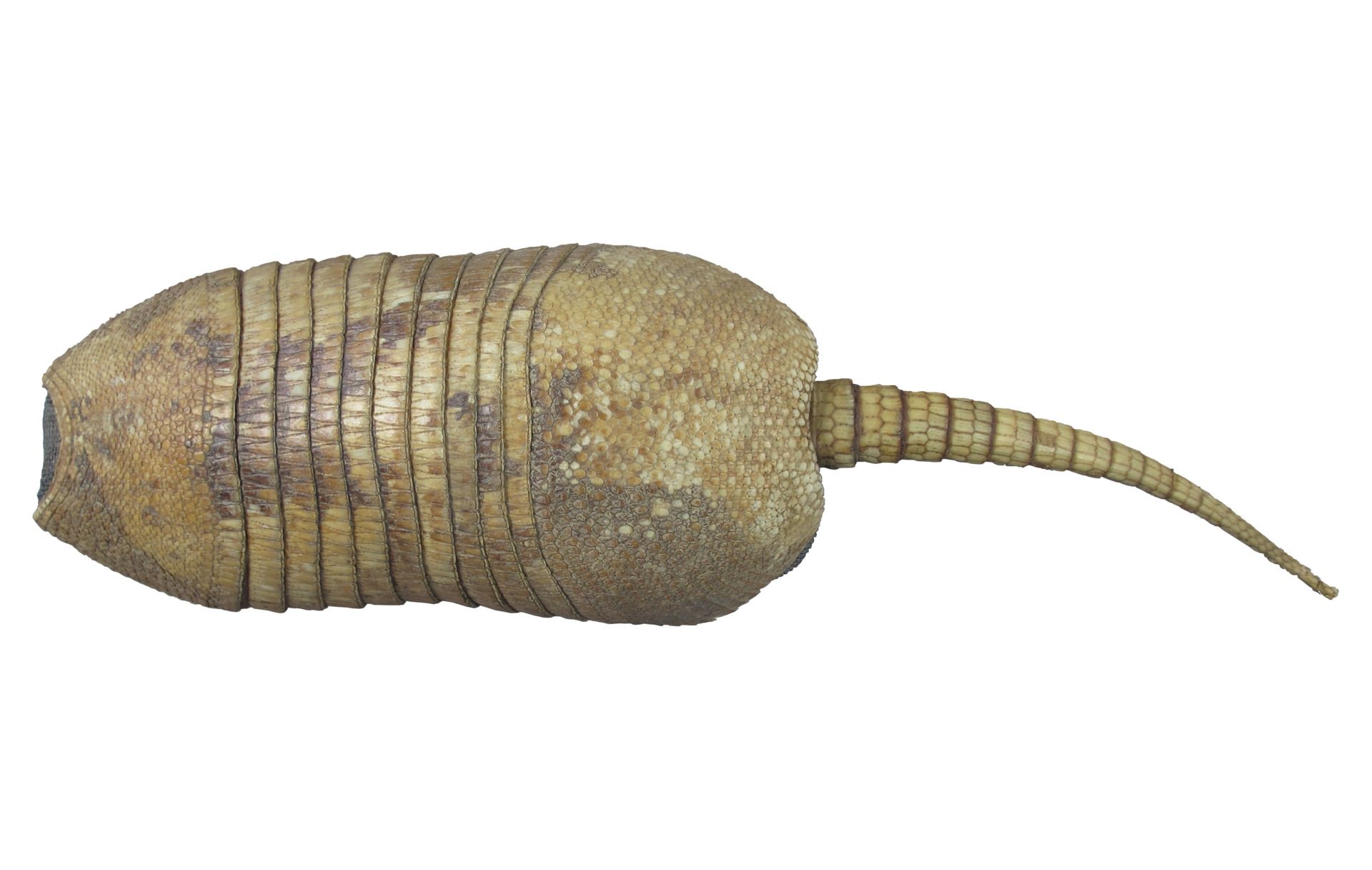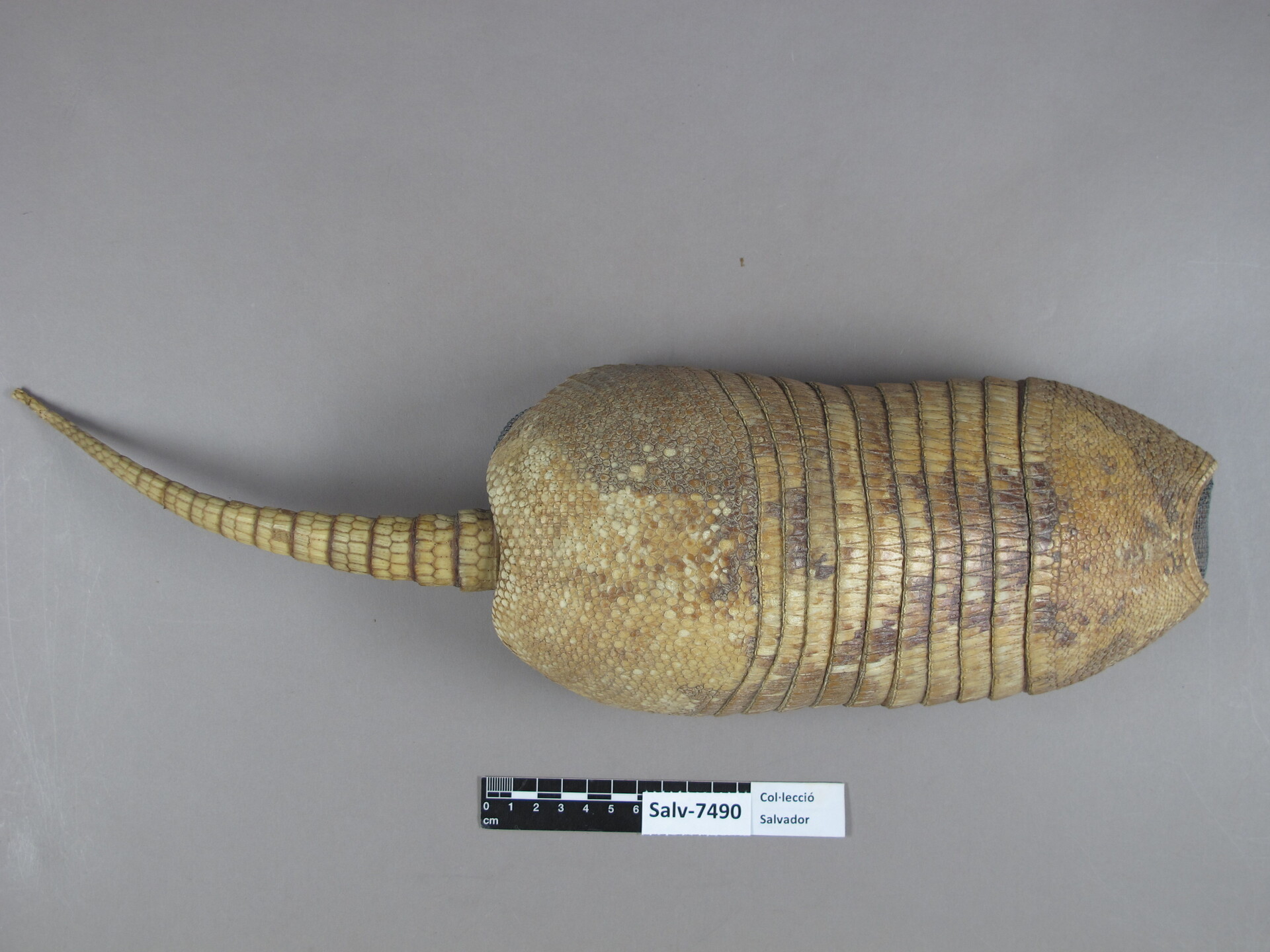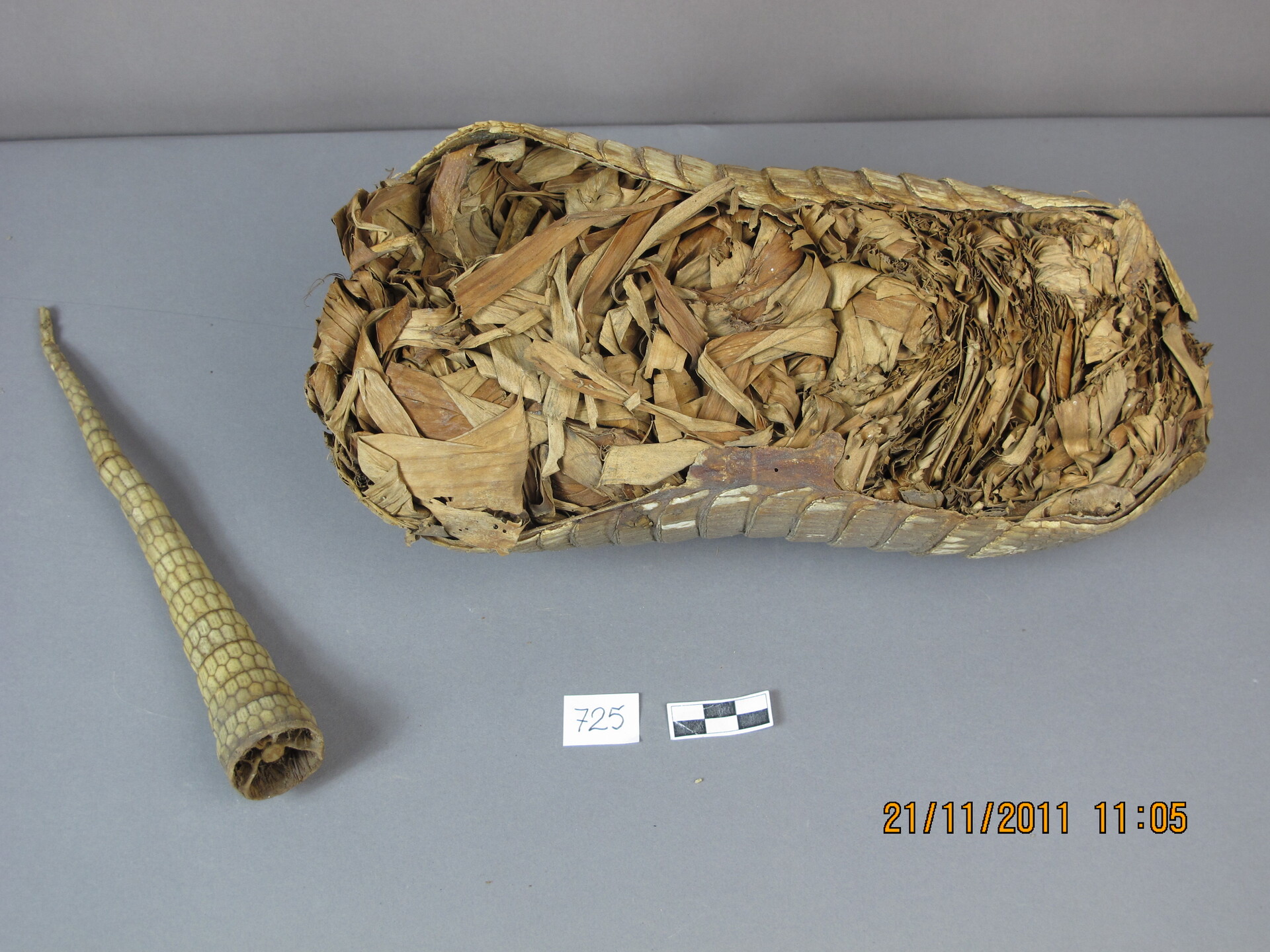Amardillo-specimen in the Collection of the Museu de Ciències Naturals de Barcelona, Salvador Collection.
Beschreibung
The armadillo has long been an iconic and exotic animal in Europe, particularly after the first specimens were brought. Their carapaces were common in early modern European pharmacies and collections, and live armadillos were often traded for gardens, kitchens, and zoos. By the 19th century, they had become emblematic of the Americas’ fauna. Their carapaces and tails were used in traditional medicine and for making musical instruments, baskets, and other decorative items, sold globally as ‘curiosities’ in the early 20th century. Additionally, subjects of scientific research on mammalian evolution, polyembryony, and heredity, Today, they are displayed in natural history, ethnographic, and folk-art collections.
A specific armadillo specimen at the Salvador Cabinet, Barcelona illustrates the trade of such specimens. Research has revealed that this specimen, which arrived in Barcelona in the 19th century, was taxidermized in South America using sugarcane. This finding offers valuable insights into the preparation and transport of these animals overseas.
Further Reading:
- Neus Ibañez (June 4, 2021). Salvador’s Cabinet of Curiosities. SciCoMove — Scientific Collections on the Move. Retrieved March 19, 2025 from <https://doi.org/10.58079/twr6>.
References:
- Julianna Morcelli (2024): Un museo en la trastienda. Ciencia, comercio y naturaleza americana en la farmacia Salvador (Barcelona, 1669-1726). Rosario, Prohistoria. Ediciones Coleccion Historia de la ciencia, 12.
- Irina Podgorny (2012): “Los conejos de calabaza”, en: El mundo atlántico y la modernidad americana, México: RGM, pp. 222 – 237.
- Egmond Forike & Peter Mason (1994): “Armadillos in Unlikely Places. Some Unpublished Sixteenth-Century Sources for New World 'Rezeptionsgeschichte' in Northern Europe”, Ibero-amerikanisches Archiv, vol. 20, n° 1/2 ,1994, pp. 3-52
A specific armadillo specimen at the Salvador Cabinet, Barcelona illustrates the trade of such specimens. Research has revealed that this specimen, which arrived in Barcelona in the 19th century, was taxidermized in South America using sugarcane. This finding offers valuable insights into the preparation and transport of these animals overseas.
Further Reading:
- Neus Ibañez (June 4, 2021). Salvador’s Cabinet of Curiosities. SciCoMove — Scientific Collections on the Move. Retrieved March 19, 2025 from <https://doi.org/10.58079/twr6>.
References:
- Julianna Morcelli (2024): Un museo en la trastienda. Ciencia, comercio y naturaleza americana en la farmacia Salvador (Barcelona, 1669-1726). Rosario, Prohistoria. Ediciones Coleccion Historia de la ciencia, 12.
- Irina Podgorny (2012): “Los conejos de calabaza”, en: El mundo atlántico y la modernidad americana, México: RGM, pp. 222 – 237.
- Egmond Forike & Peter Mason (1994): “Armadillos in Unlikely Places. Some Unpublished Sixteenth-Century Sources for New World 'Rezeptionsgeschichte' in Northern Europe”, Ibero-amerikanisches Archiv, vol. 20, n° 1/2 ,1994, pp. 3-52
Kurzbeschreibung
The armadillo has long been an iconic and exotic animal in Europe, particularly after the first specimens were brought. Their carapaces were common in early modern European pharmacies and collections, and live armadillos were often traded for gardens, kitchens, and zoos. By the 19th century, they had become emblematic of the Americas’ fauna.
Typ
Armadillo (DASYPUS NOVEMCINCTUS)
Thema
american fauna, cabinet of curiosities, exotic animal
Beteiligte Personen und Organisationen
A specific armadillo specimen at the Salvador Cabinet, Barcelona illustrates the trade of such specimens. Research has revealed that this specimen, which arrived in Barcelona in the 19th century, was taxidermized in South America using sugarcane. This finding offers valuable insights into the preparation and transport of these animals overseas.
Ort
South America
Maße/Umfang
110 x 135 x 500 mm
Material/Technik
Naturalized skin with leaf filling - taxidermy
Identifikator
Inventory number: Salv-7490
Förderung
Project: SciCoMove - Scientific Collections on the Move: Provincial Museums, Archives and Collecting Practices (1800-1950).
Funding: This project has received funding from the European Union’s Horizon 2020 research and innovation programme under the Marie Skłodowska-Curie grant agreement No 101007579.
The contents of this publication are the sole responsibility of the SciCoMove consortium and do not necessarily reflect the opinion of the European Union.
Funding: This project has received funding from the European Union’s Horizon 2020 research and innovation programme under the Marie Skłodowska-Curie grant agreement No 101007579.
The contents of this publication are the sole responsibility of the SciCoMove consortium and do not necessarily reflect the opinion of the European Union.
Dateien



Quellenangabe
„Amardillo-specimen in the Collection of the Museu de Ciències Naturals de Barcelona, Salvador Collection.,” SciCoMove, zuletzt aufgerufen am 1. Juli 2025, https://ausstellungen.deutsche-digitale-bibliothek.de/scicomove/items/show/7.
